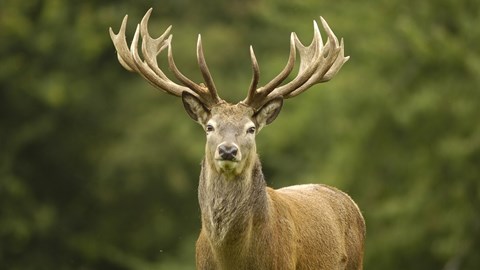Stamp: Ciervo de los Pantanos National Park, Buenos Aires, Surcharg (Argentina 2025)
Ciervo de los Pantanos National Park, Buenos Aires, Surcharg (Argentina 2025)
01 January (Argentina ) within release 2025 Provisional Surcharges goes into circulation Stamp Ciervo de los Pantanos National Park, Buenos Aires, Surcharg face value 2,000 Argentine peso
| Stamp Ciervo de los Pantanos National Park, Buenos Aires, Surcharg in catalogues | |
|---|---|
| Colnect codes: | Col: AR 2025.00.00-08 |
Stamp is horizontal format.
Security mark at leftAlso in the issue 2025 Provisional Surcharges:
- Stamp - Berenjena (aubergine) - Solanum melongena, Surcharged face value 3,000;
- Stamp - Campos del Tuyu National Park, Buenos Aires, Surcharged face value 1,500;
- Stamp - Ciervo de los Pantanos National Park, Buenos Aires, Surcharg face value 2,000;
- Stamp - Durazno (peach) - Prunus persica, Surcharged face value 1,500;
- Stamp - El Impenetrable National Park, Chaco, Surcharged face value 1,000;
- Stamp - El Leoncito National Park, San Juan, Surcharged face value 7,000;
- Stamp - El Palmar National Park, Entre Rios, Surcharged face value 3,000;
- Stamp - El Rey National Park, Salta, Surcharged face value 1,000;
- Stamp - Glaciers National Park, Santa Cruz, Surcharged face value 5,000;
- Stamp - Pre-Delta National Park, Entre Rios face value 10,000;
- Stamp - Sierra de Las Quijadas National Park, San Luis, Surcharged face value 3,000;
- Stamp - Zanahoria (carrot) - Daucus carota, surcharged face value 1,500;
Stamp Ciervo de los Pantanos National Park, Buenos Aires, Surcharg it reflects the thematic directions:
Animals are multicellular, eukaryotic organisms of the kingdom Animalia (also called Metazoa). All animals are motile, meaning they can move spontaneously and independently, at some point in their lives. Their body plan eventually becomes fixed as they develop, although some undergo a process of metamorphosis later on in their lives. All animals are heterotrophs: they must ingest other organisms or their products for sustenance.
A deer (pl.: deer) or true deer is a hoofed ruminant ungulate of the family Cervidae. It is divided into subfamilies Cervinae (which includes, among others, muntjac, elk (wapiti), red deer, and fallow deer) and Capreolinae (which includes, among others reindeer (caribou), white-tailed deer, roe deer, and moose). Male deer of almost all species (except the water deer), as well as female reindeer, grow and shed new antlers each year. These antlers are bony extensions of the skull and are often used for combat between males.
A landscape is the visible features of an area of land, its landforms and how they integrate with natural or man-made features. A landscape includes the physical elements of geophysically defined landforms such as (ice-capped) mountains, hills, water bodies such as rivers, lakes, ponds and the sea, living elements of land cover including indigenous vegetation, human elements including different forms of land use, buildings and structures, and transitory elements such as lighting and weather conditions. Combining both their physical origins and the cultural overlay of human presence, often created over millennia, landscapes reflect a living synthesis of people and place that is vital to local and national identity. The character of a landscape helps define the self-image of the people who inhabit it and a sense of place that differentiates one region from other regions. It is the dynamic backdrop to people’s lives. Landscape can be as varied as farmland, a landscape park, or wilderness. The earth has a vast range of landscapes, including the icy landscapes of polar regions, mountainous landscapes, vast arid desert landscapes, islands and coastal landscapes, densely forested or wooded landscapes including past boreal forests and tropical rainforests, and agricultural landscapes of temperate and tropical regions.
Mammals are any vertebrates within the class Mammalia (/məˈmeɪli.ə/ from Latin mamma "breast"), a clade of endothermic amniotes distinguished from reptiles (including birds) by the possession of a neocortex (a region of the brain), hair, three middle ear bones and mammary glands. All female mammals nurse their young with milk, secreted from the mammary glands. Mammals include the largest animals on the planet, the great whales. The basic body type is a terrestrial quadruped, but some mammals are adapted for life at sea, in the air, in trees, underground or on two legs. The largest group of mammals, the placentals, have a placenta, which enables the feeding of the fetus during gestation. Mammals range in size from the 30–40 mm (1.2–1.6 in) bumblebee bat to the 30-meter (98 ft) blue whale. With the exception of the five species of monotreme (egg-laying mammals), all modern mammals give birth to live young. Most mammals, including the six most species-rich orders, belong to the placental group. The largest orders are the rodents, bats and Soricomorpha (shrews and allies). The next three biggest orders, depending on the biological classification scheme used, are the Primates (apes and monkeys), the Cetartiodactyla (whales and even-toed ungulates), and the Carnivora (cats, dogs, seals, and allies).




